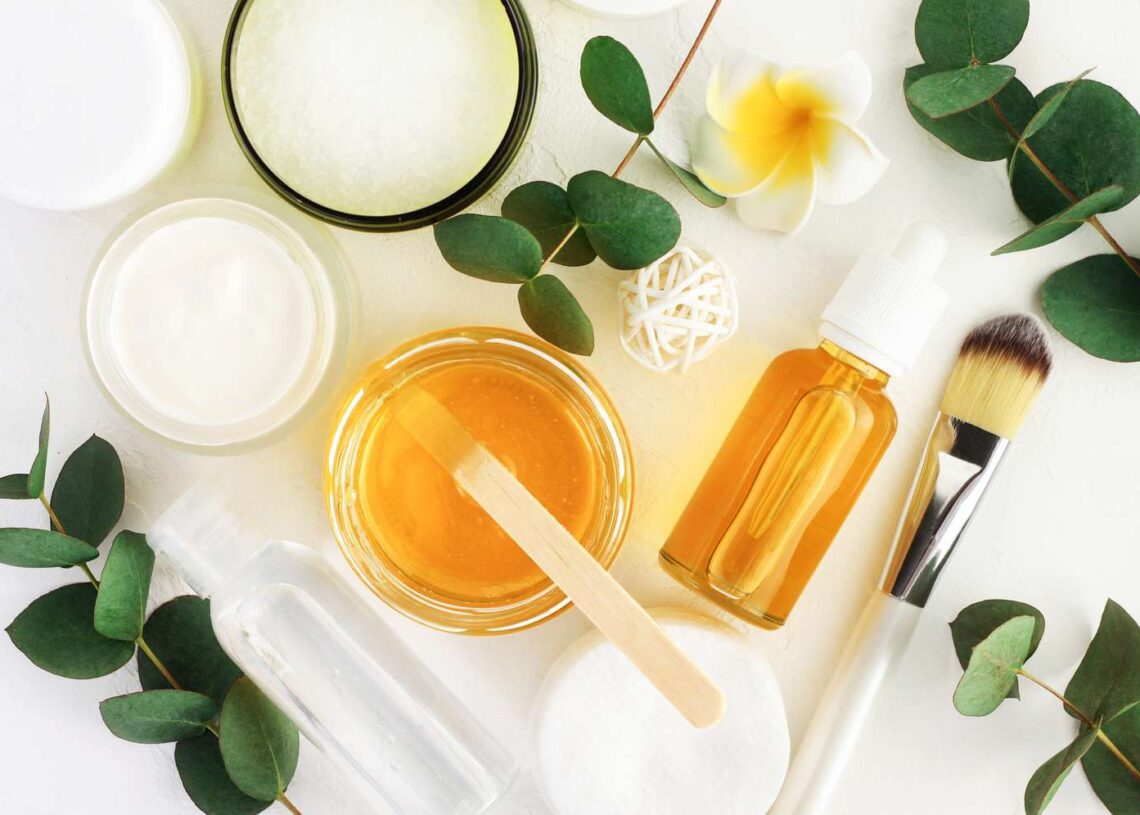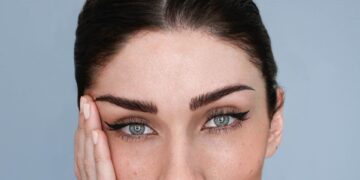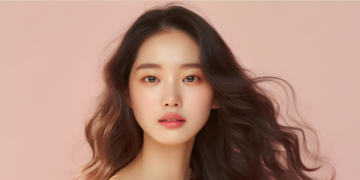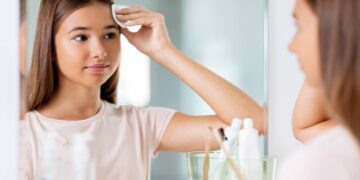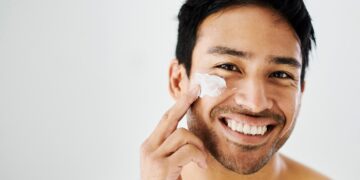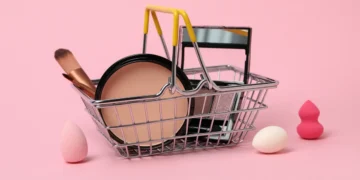Decoding Ingredient Lists: Empowering Your Beauty Choices
Navigating the world of conscious cosmetics can initially feel overwhelming. A crucial step is understanding what’s in your products by carefully examining ingredient lists and being mindful of marketing claims. This knowledge is your key to making informed decisions.
Understanding Ingredient Transparency
Ingredient lists can sometimes feel like deciphering a complex code. The key is to move beyond attention-grabbing marketing terms and focus on understanding the function and potential effects of each ingredient. Numerous resources are available to help you decode these lists, offering explanations of common cosmetic ingredients and their potential impact on your skin and health. Take the time to familiarize yourself with ingredients you may wish to avoid, empowering you to make conscious choices.
Consumers are increasingly vocal in their demand for transparency from beauty brands. They want clear, easy-to-understand ingredient lists that allow them to identify potentially harmful substances. This push for openness is driving brands to be more forthcoming about their formulations and sourcing practices.
However, it’s important to maintain a healthy degree of skepticism. While consumers crave transparency, trust in self-proclaimed “clean” or “organic” labels remains relatively low. A recent survey indicated that only a small percentage of consumers place complete trust in voluntary labels. This skepticism underscores the need for independent, third-party certifications that can provide an unbiased assessment of a product’s claims.
Independent testing and certification can offer a valuable layer of assurance regarding product safety and authenticity. Consumers are actively seeking credible validation of the claims made by brands. This demand is fueling the rise of certifications that rigorously verify conscious cosmetic standards. For example, a survey highlights that a significant number of consumers consider organically sourced ingredients to be important.
Demystifying “Free-From” Claims: Parabens, Fragrances, and Beyond
The beauty industry is currently awash with products touting “clean” formulations, leading many to wonder what claims like “paraben-free” and “fragrance-free” truly signify. Let’s delve into the driving forces behind these claims and what consumers are seeking when they choose these products.
Understanding Consumer Preferences
Consumers are demonstrating increased diligence when scrutinizing product labels. Market research reveals a significant shift in attitudes towards ingredient safety and transparency. People are increasingly invested in knowing exactly what they’re applying to their skin.
Products formulated without parabens are experiencing notable growth in popularity. Sales in this segment are outpacing the overall beauty market, underscoring consumer apprehension regarding synthetic preservatives.
Similarly, a growing segment of consumers now favors products that are free from artificial fragrances. A survey revealed that a significant percentage of buyers actively seek out options that avoid parabens, sulfates, and artificial fragrances.
The concept of “clean” beauty is steadily gaining mainstream acceptance. Annual sales in this category have reached significant figures, with a substantial proportion of consumers actively seeking out products formulated with natural ingredients.
This trend reflects deeper, underlying concerns related to personal health, environmental impact, and ethical sourcing practices. The presence of “paraben-free” and “fragrance-free” labels serves as a signal of transparency and a commitment to safety, resonating with these values.
Fueled by these concerns, the US market for conscious cosmetics is experiencing rapid expansion, particularly in the realm of paraben-free and fragrance-free products. Sales of paraben-free beauty items are growing at a significantly faster rate than the overall market. A 2025 survey indicated that a large percentage of US buyers prefer products devoid of parabens, sulfates, and artificial fragrances, with a majority actively checking ingredient lists. Clean beauty sales have reached a substantial amount annually in the US, with a considerable portion of consumers actively seeking natural ingredients. This reflects a broader shift towards prioritizing health and environmental considerations in beauty choices.
EWG Verified: A Benchmark for Safety or Just Another Label?
The EWG (Environmental Working Group)’s “EWG Verified” certification is frequently lauded as a gold standard within the conscious cosmetics movement. However, is it truly the ultimate benchmark for safety and transparency? Let’s examine what this certification entails and its impact on the beauty industry.
Examining the EWG Standard
The “EWG Verified” mark has emerged as a prominent standard in the conscious beauty arena. It signifies that a product is free from ingredients that the EWG deems unacceptable due to potential health, environmental toxicity, or pollution risks.
EWG certification mandates complete disclosure of all ingredients, including fragrance components, and adherence to stringent Good Manufacturing Practices. This unwavering commitment to transparency and safety is a key factor driving consumer trust in products bearing the EWG Verified seal.
The increasing consumer demand for conscious cosmetics has prompted numerous brands to actively seek EWG verification. This, in turn, encourages brands to carefully refine their ingredient choices, production methodologies, and packaging practices, ultimately propelling the beauty industry towards enhanced safety and sustainability.
While a universally accepted definition of “clean beauty” remains elusive, EWG Verified has become a significant and widely recognized indicator for consumers who are actively seeking genuinely safe and transparent products. Its widespread recognition empowers consumers to make more informed choices, cutting through marketing jargon and providing a tangible measure of assurance.
Natural vs. Synthetic: Navigating the Ingredient Landscape
The world of conscious cosmetics often ignites passionate discussions about the relative merits of natural versus synthetic ingredients. Let’s explore this debate and understand the nuances involved in choosing what’s right for your individual needs and preferences.
Defining “Clean”
Conscious cosmetics emphasize the avoidance of potentially harmful ingredients while prioritizing transparency and safety. However, the absence of a universal standard has led to diverse interpretations among brands. This makes understanding the ingredients themselves all the more critical.
Many advocates of conscious cosmetics express a preference for natural botanicals, such as aloe vera and green tea extract. These ingredients are often chosen for their perceived antioxidant and anti-inflammatory properties, aligning with a desire for plant-based solutions.
Conversely, certain synthetic additives, such as parabens and phthalates, face heightened scrutiny due to potential health risks. Concerns about endocrine disruption and allergic reactions often drive consumers to avoid these ingredients in favor of natural alternatives.
It’s crucial to remember that the term “natural” does not automatically equate to “safe.” Some naturally derived substances can, in fact, cause irritation or allergic reactions in sensitive individuals. Similarly, many synthetic ingredients undergo rigorous and thorough testing to ensure their safety for cosmetic use.
Ultimately, the conscious cosmetics movement reflects a growing consumer demand for ingredient transparency and ethical sourcing practices. Brands are increasingly focusing on validating the safety and efficacy of their ingredients and providing clear, easily understandable labeling to build consumer trust in a highly competitive market.
Cruelty-Free Cosmetics: Beyond the Symbol
The cruelty-free movement is gaining considerable momentum within the beauty industry, but what does it truly mean for consumers? It represents far more than just a cute bunny logo; it reflects a growing awareness of ethical considerations surrounding animal welfare and responsible sourcing.
Ethical Considerations
Consumers are demonstrating increasing concern for both animal welfare and ingredient transparency in their purchasing decisions. This shift is fueling the demand for cruelty-free and conscious cosmetic products. People want assurance that the products they use are not only safe and effective but also created without causing harm to animals.
Nearly two in five consumers consider naturally derived ingredients to be a key factor when purchasing beauty products. A preference for environmentally conscious brands and recyclable packaging is also on the rise, demonstrating the increasing influence of ethical considerations on consumer choices.
The vegan cosmetics sector has experienced significant expansion, reaching a substantial valuation globally. This growth is driven by consumer advocacy and regulatory changes that favor cruelty-free standards, highlighting the sector’s increasing importance.
Social media campaigns launched by cruelty-free brands are playing a crucial role in raising public awareness. Consumers now expect companies to be transparent about their animal testing policies and ethical formulations, holding brands accountable for their practices.
Demands for transparency, safety concerns surrounding synthetic chemicals, and evolving regulations are collectively reshaping the definition of “clean beauty.” This convergence is driving innovation throughout the industry, pushing for the development of safer, more sustainable, and ethically responsible products.
Q&A
Question 1: What is driving the growing interest in “clean beauty” products?
Answer: The “clean beauty” movement is fueled by a rising consumer desire for transparency and safety in personal care products. Consumers are scrutinizing ingredient lists, seeking to understand the potential impacts of both natural and synthetic ingredients, and prioritizing ethical sourcing. This reflects a broader concern for healthier skin and a more responsible approach to beauty.
Question 2: Why is ingredient transparency so crucial in the clean beauty market, and what challenges exist in achieving it?
Answer: Transparency allows consumers to identify potentially harmful substances and make informed choices. However, navigating ingredient lists can be confusing due to marketing jargon. Furthermore, consumer trust in self-proclaimed “clean” or “organic” labels is low (only 9% completely trust voluntary labels), highlighting the need for reliable third-party certifications like EWG Verified.
Question 3: What is the significance of certifications like EWG Verified in the clean beauty industry?
Answer: Certifications like EWG Verified provide independent validation of product safety and authenticity, addressing consumer skepticism towards brand claims. EWG Verified signifies that a product is free from ingredients deemed unacceptable by the Environmental Working Group due to potential health, ecotoxicity, or pollution risks. This builds consumer trust and drives industry-wide improvements in ingredient choices and production methods.
Question 4: What are the key differences and considerations when comparing natural versus synthetic ingredients in clean beauty products?
Answer: The “natural vs. synthetic” debate is complex. While many prefer natural ingredients for perceived health benefits and align with a plant-based ethos, “natural” doesn’t guarantee safety. Conversely, many synthetic ingredients undergo rigorous safety testing. Ultimately, both natural and synthetic ingredients should be evaluated for their potential risks and benefits, with transparency being paramount.
Question 5: How is the cruelty-free movement impacting the clean beauty landscape?
Answer: The cruelty-free movement, driven by ethical consumerism and concerns for animal welfare, is significantly influencing clean beauty. Consumers are increasingly demanding transparency regarding animal testing policies and ethical sourcing. This, coupled with the growth of the vegan cosmetics sector (valued at $19.21 billion globally in 2024), is reshaping the industry towards safer and more ethical products.
